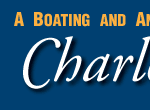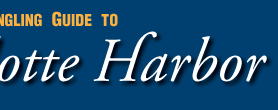CONTACT US:
Florida Fish and Wildlife
Conservation Commission
Fish and Wildlife
Research Institute
100 Eighth Avenue SE
St. Petersburg, Florida 33701
727-896-8626
|
|
|
Charlotte County
UF/IFAS Extension
Florida Sea Grant
25550 Harbor View Rd #3
Port Charlotte, Florida 33980
941-764-4340
|
|
|

|
|
Funding for this project was obtained through grants from the West Coast Inland Navigation District and Charlotte County.
|
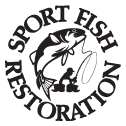
|
|
Additional funding for this project was obtained through the Federal Aid in Sport Fish Restoration Fund.
|
|
|

|
SEA TURTLES
Florida’s waters are home year-round to five species of sea turtles. All are protected by state and federal regulations. Sea turtles surface to breathe and occasionally bask at the surface, which makes them vulnerable to boat strikes. During their nesting season, May to October, sea turtles may be concentrated near beaches. The sea turtle most commonly seen in coastal waters is the loggerhead, followed by the green turtle, Kemp’s ridley, and hawksbill. A fifth species, the leatherback, is typically seen in deep offshore waters. |
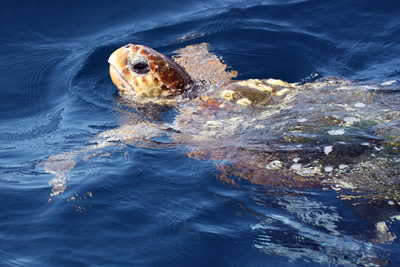
|
You Can Help:
- Keep a sharp lookout for turtles near the surface, especially on sunny days.
- Maintain a moderate vessel speed in shallow water and near beaches.
- Keep beaches and waterways clean and free of pollution, such as fishing line, which can entangle sea turtles.
- Protect seagrass beds. Avoid creating propeller scars
- Support efforts to protect sea turtles and their habitats
- Report injured or dead sea turtles to the FWC’s Wildlife Alert Hotline at 888-404-FWCC (3922).
For more information about sea turtles, visit FWC's Sea Turtle Research Program.
|
MANATEES
Manatees are year-round residents of Charlotte Harbor. In the summer, they are widely scattered throughout the harbor, commonly in shallow waters less than six feet deep that hold the seagrasses on which they feed. In the winter they gather near warm water power plant outfalls and springs to stay warm.
Many manatee injuries and deaths occur as a result of blunt trauma with watercraft. Boaters can reduce the chance of harming manatees by practicing responsible boating.
|
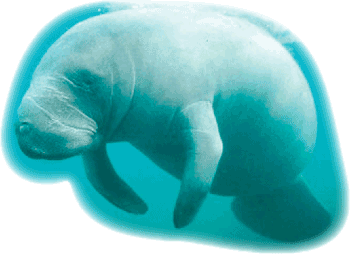
|
You Can Help:
- Observe and follow all speed zone signs.
- Slow down. Reducing speed allows boaters to avoid manatees.
- Use marked channels whenever possible. Channel depth reduces the likelihood of pinning or crushing manatees.
- Wear polarized glasses. Polarized lenses make it much easier to see an object beneath the surface and the “swirling” that occurs when a manatee dives.
- Designate a person on board to look out for wildlife, other boaters, swimmers, or obstructions when the vessel is underway.
- Stow trash and properly discard monofilament fishing line. Manatees may swallow or become trapped in lines and other plastic debris.
- Obey state and federal laws that make it illegal to harass, capture, hunt, or kill a manatee. To report dead or distressed manatee or to report violations, call FWC's Wildlife Alert Hotline at 888-404-FWCC (3922).
For more information about manatees, visit FWC's Manatee Program.
|
BIRDS OF CHARLOTTE HARBOR
Despite the environmental pressures from growth and development in the region, Charlotte Harbor continues to attract a remarkable variety and number of birds. However, maintaining these bird populations in growing metropolitan areas is challenging. Many species are declining, and some have virtually disappeared due to loss and disruption of habitat.
Islands, beaches, and some inland causeways provide nesting areas for many species of birds including those classified as imperiled. Mudflats and seagrass meadows in shallow sections of the harbor provide a bountiful feeding ground for resident, migrant, and wintering shorebirds. Open waters are a habitat for loons, grebes, and ducks. Ospreys and bald eagles can be found throughout Charlotte Harbor.
|
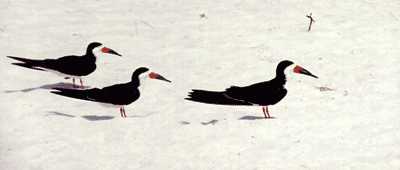
© Chris Anderson
|
You Can Help:
- Observe posted signs that identify nesting colonies and try to keep a distance of 500 feet.
- Keep pets leashed and away from posted nesting areas.
- If you happen upon a concentration of birds, you may be near a nesting colony. Carefully pick up your belongings and leave. Choose a spot at least 500 feet away from the birds and enjoy the view.
- If a bird becomes entangled in fishing gear, carefully remove the hook and monofilament line. Also, while walking along the beach, pick up any stray fishing line and dispose of it properly. Birds and other animals that ingest or become entangled in fishing line may die.
- Report injured seabirds that require assistance. Information for seabird rescue organizations can be found in the Resource Directory.
- Stay clear of areas that may harbor nesting colonies and avoid areas where feeding birds are visible. Please do not operate a personal watercraft or airboat near the shore except to idle or to reach a destination point. Noise and prop wash from those vessels disturb wildlife and may disrupt nesting and feeding.
For more information about birds of Charlotte Harbor, visit the Peace River Audubon Society or Venice Area Audubon Society.
|
If you have any questions, comments, or suggestions about this Web site, please e-mail us at Boating_Guides@MyFWC.com.
Would you like to receive notices of changes to this Web site and the Boating and Angling Guide to Charlotte Harbor? If so, please e-mail us and include SUBSCRIBE-CHARLOTTE in the subject line.
|
